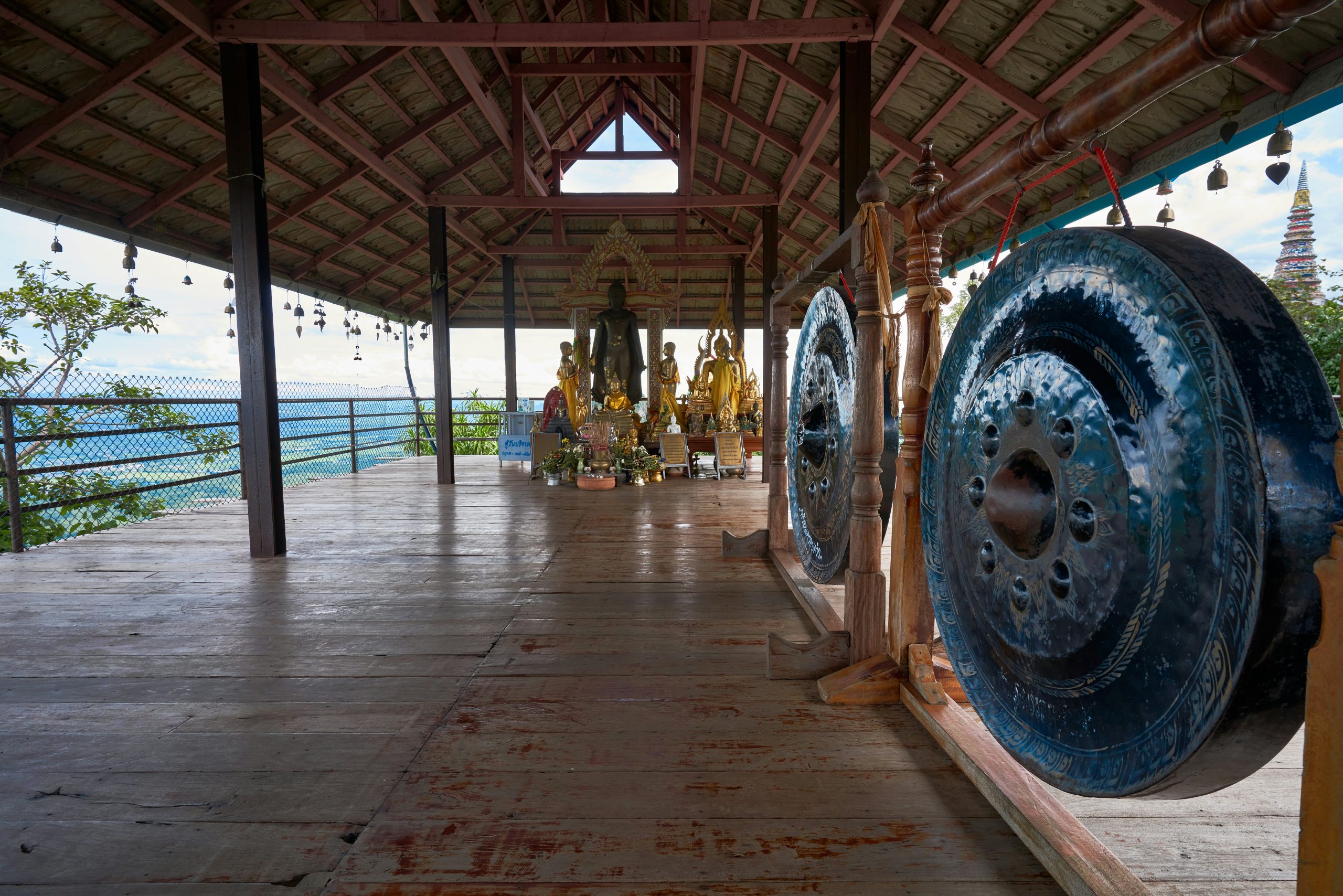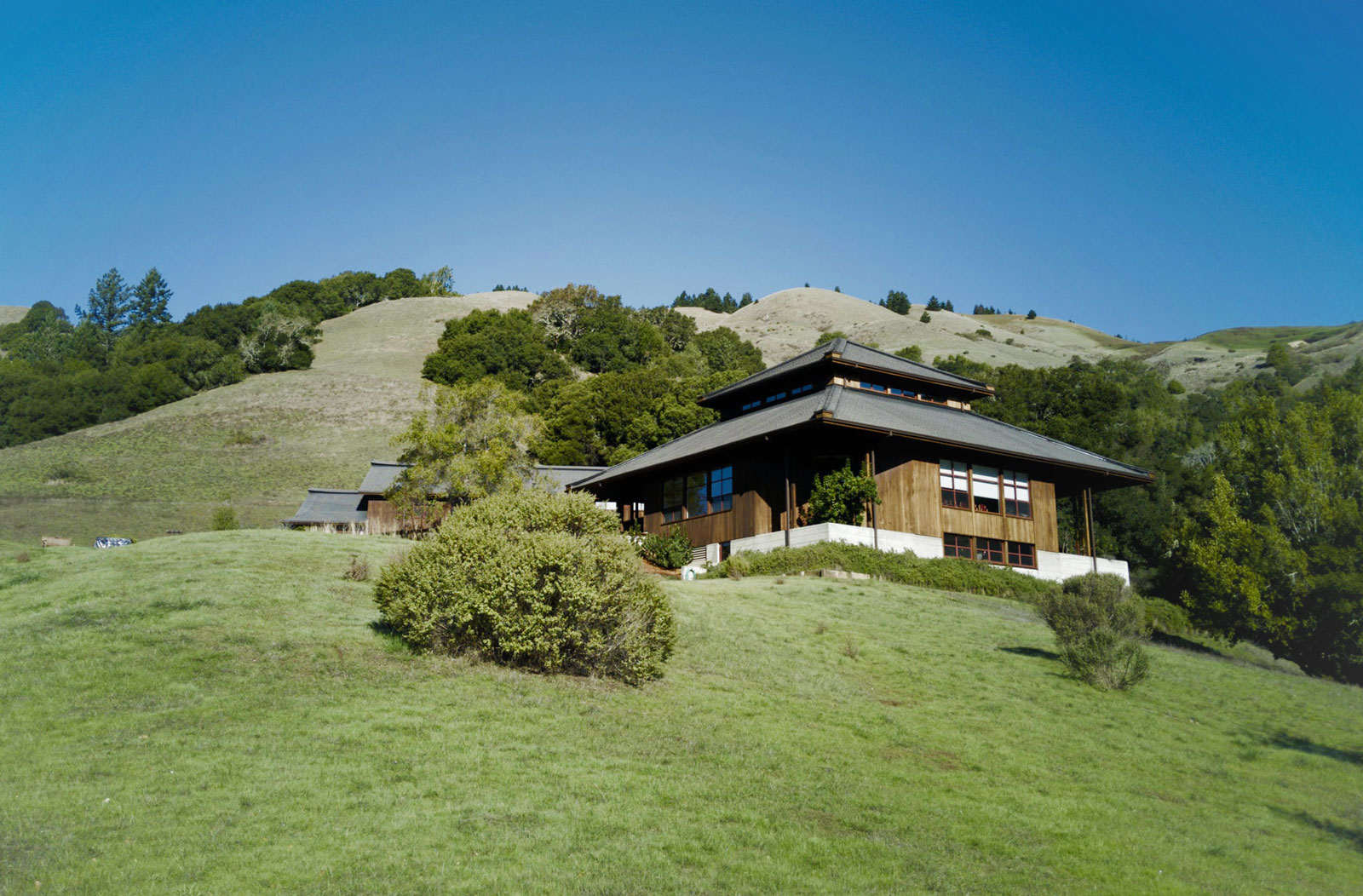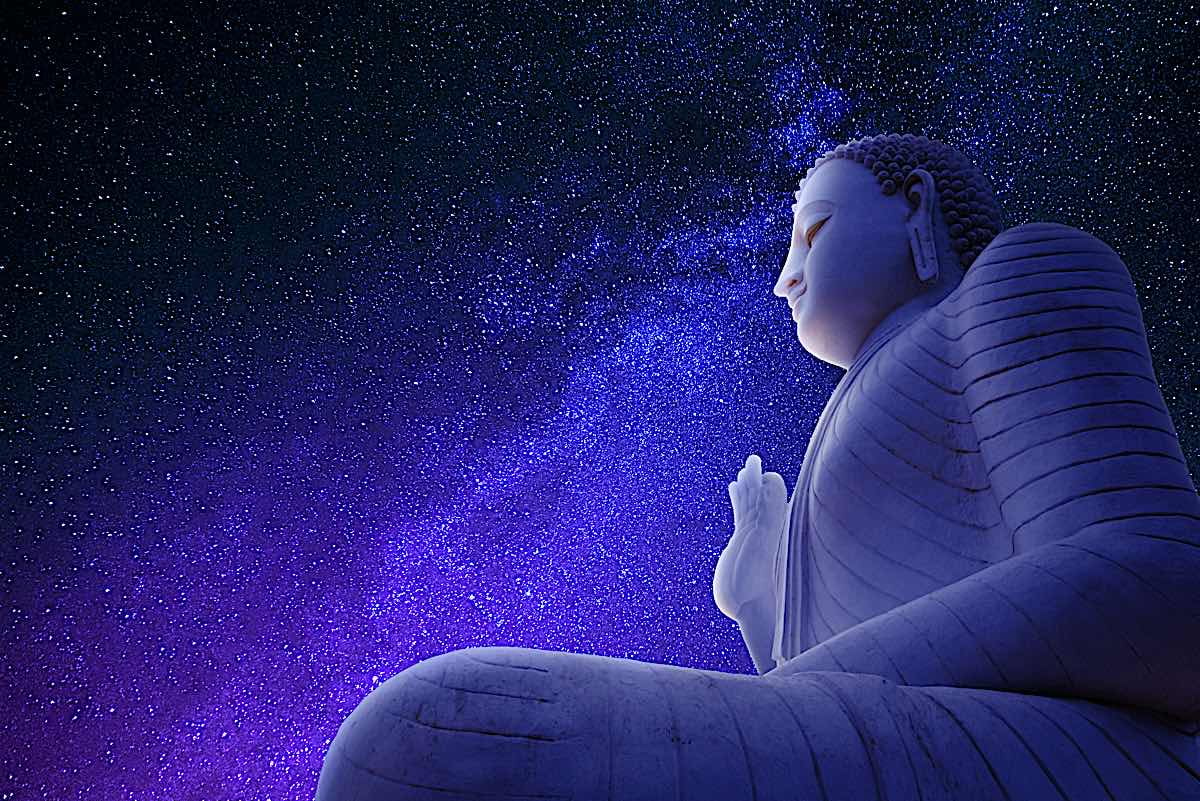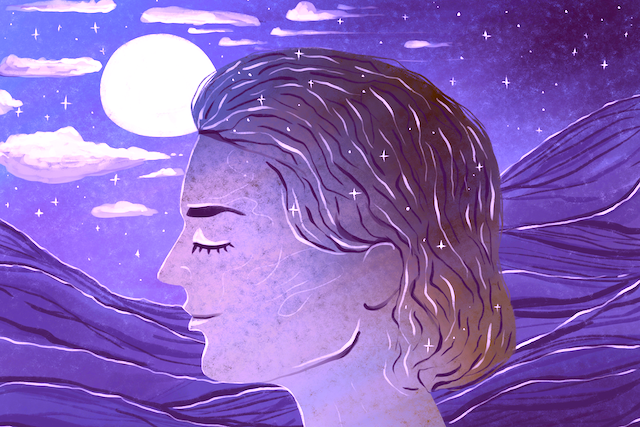The Broken Gong
A Theravada monk on silencing the inner commentary that permeates our lives The post The Broken Gong appeared first on Tricycle: The Buddhist Review.

If you’ve ever participated in a Zoom meeting, you may have had the experience where someone has two microphones open in the same room. The sound gets echoed again and again and again. It’s called a positive feedback loop—not because it’s a good thing, but because it strengthens itself.
Our minds are like that. You comment on something that’s happening, and it seems to ricochet around in the mind. It’s as if like there are lots of voices inside all agreeing, which makes what they say seem more and more real, more and more worthy of credence. But it drives you crazy—in some cases, literally, crazy. People who go off alone often have nothing but their own echo chamber inside. Something gets amplified, magnified, copied again and again, and becomes an obsession.
Of course, in the time of the Buddha, they didn’t have Zoom meetings, but they did have gongs. The Buddha says, ideally, you want to make your mind like a broken gong. People can hit it, but there’s no reverberation. It’s not a very pretty image, but it makes an important point. What other people say, what you say, hits your ear, and you want to leave it right there. Don’t add any reverb.
This is one of the Buddha’s recommendations for how you deal with unpleasant words. Tell yourself, “An unpleasant sound has made contact at the ear. When the sound ends, when the contact ends, that should be it.” Anything beyond that, any commentary inside, is your own amplification, your own addition to the initial suffering, which may not have been all that much to begin with. Or it may have been pretty strong, but you amplify it even further, making it bigger than it has to be.
The same principle applies to physical pain. Our comments on the pain are often more unbearable than the pain itself. We can get worked up about a physical sensation that we haven’t really examined all that carefully.
The best way to stop this sort of commentary is to look into the actual sensation, to see what’s there in and of itself. We don’t like doing that.
Our comments on the pain are often more unbearable than the pain itself.
It requires sustained focus, which can be tiring. This is why the strategy in meditation is to focus on other parts of the body first, to see if you can make them comfortable with the breath. This is one of the reasons why full-body awareness, full-body breathing, is an important part of the Buddha’s toolbox. If you focus just on the nose, it’s hard to have a very pleasant sensation of breathing just at the nose. But if you focus on how the breathing process feels, say, in your throat, in your chest, in your abdomen, you can derive more pleasure from each in and out breath.
Then you can look at the extent to which you tense up your shoulders or your back when you breathe in: Is it at all necessary? Can you breathe in and out without adding to that tension? Can you think of the breath energy penetrating parts of the body that have been pretty impervious or shut off from the breathing process? See what happens. When you do all this, the breath can become very satisfying, very gratifying, and it gives you a good place to stand.
Then if there’s a pain in the knee, the hips, or the back as you meditate, you can look at it from another part of the body. You’re not totally immersed in the pain itself. You can ask different questions about it. Question your perceptions around the pain.
Your inner commentary involves two levels of fabrication: what the Buddha called verbal fabrication, which is your conversation inside about the pain, and mental fabrication, the perceptions, the images you hold in mind and around the pain. One important perception to question concerns the relationship between your sensation of the body and the sensation of the pain. Are they right in the same spot? Are they the same thing?
One way to answer that question is to ask yourself: Where is the sharpest point of the pain right now? You’ll notice that as soon as you focus on it, it moves. It goes someplace else. So you follow it. You keep this up for a while, and there will be a sense that the pain and the body separate out from each other, like cream separating out of milk.
Back in the old days when they didn’t have homogenized milk, I remember when the milkman would come and place the milk at the back door. There’d be about an inch of cream on the top of each bottle. It naturally separated out. In the same way, when you start questioning the perception where the mind says to itself, “The pain is right there and it really hurts right there in that part of the body,” question it. You’ll begin to notice that body sensations and pain sensations can separate out from each other. Sometimes when the pain sensation separates out, it disappears. Sometimes it hovers there, separate from the body. Sometimes you have the weird sense that when it separates out from the body, it slips into your heart and disappears there.
This way, you change your commentary, you change the things you’re saying to yourself. You learn how to say healthier things.
Then you can take this skill and apply it to other parts of your life as well. If you find you’re driving yourself crazy over some incident in your family life, at work, whatever, and it echoes, echoes, echoes, echoes in the mind, you can question it: What actually happened, and where right now is the sensation of that event? It’s at the contact at the mind. But why does it have to contact the mind now, when the incident happened a long time ago? Or even if it’s happening right now, why do you have to comment on it in a way that stabs the mind and drives you crazy? You have the choice.
This is one of the reasons why the Buddha taught the Dhamma to begin with. People were suffering and they didn’t see that they had any choice in the matter. They felt they just had to suffer, to put up with it as part of life. You hear this now, again and again, even in Buddhist circles: Aging is part of life, so we have to learn how to accept it. Death is part of life, so we have to learn how to accept it. Well, yes, we accept the fact that it happens, but you don’t have to accept the fact that you’re going to suffer from it.
The strange thing is, when you begin to learn how not to suffer from it right now, you’re creating the conditions where you won’t have to experience it at all sometime in the future. In other words, it is possible to find the deathless inside when you question the way you put things together right now. Remember, the present moment is a construct. There’s the raw material coming in from your past kamma. Any sights, sounds, smells, tastes, or tactile sensations that come your way, any ideas that come popping into the mind: They’re all the results of past kamma. The Buddha says to see it that way. But past kamma isn’t everything. How you put it together right now in the present is important, too. In fact, that’s what makes the difference between whether you’re going to suffer from the past kamma or not.
It’s like going into your kitchen. You open your refrigerator, and there’s nothing there but raw eggs. You weren’t looking forward to having eggs today, but that’s what you’ve got, so that’s what you’ll eat. Still, you don’t have to eat them raw. You can cook them, do all kinds of things with them: boil them, fry them, steam them, scramble them.
So there are these potentials coming from the past, and what matters is what you do with them, in terms of how you breathe, how you talk to yourself, and the images you hold in mind. So learn how to question the way you talk to yourself and the images you hold in mind. Question even the way you breathe. We’re told again and again, “When you’re doing breath meditation, just let the breath do its own thing. Don’t try to control it.” But you’ve got the opportunity to make it really pleasant, and the Buddha encourages you to do that. As he said, you train yourself to breathe in and out sensitive to pleasure, breathe in and out sensitive to rapture. Pleasure and rapture of this sort don’t just happen on their own. You don’t sit there waiting for them to happen. You can change the way you breathe so that it induces feelings of pleasure and rapture. You’ve got that potential. There are lots of different potentials there. You can talk to yourself in ways that increase your suffering or decrease it. Why choose to increase it when you have the other opportunity? The perceptions you hold in mind you can change as well.
So realize that you have this power, and view the Buddha’s teachings basically as advice in all these levels of fabrication. Bodily: Learn how to breathe in a new way. Verbal: Talk to yourself in a new way. Ask new questions. The Buddha made a science of questions, you know. He divided questions into four types: the questions that deserve categorical answers, those that have to be reanalyzed before you answer them, those where you have to question the questioner before you answer them, and those where you put the question aside because it’s not worth answering. These categories don’t apply only to questions coming from other people. They also apply to what the mind says inside to itself, the questions it raises, the way it looks at things.
So when a question comes up in your mind, you can ask yourself: Which category does it belong to? Does it really deserve an answer? Is the answer something that’s going to apply only to specific incidents? Or is it a general principle that’s true across the board? There are a lot of ways we get ourselves into trouble by holding on to something that was true for one set of circumstances and then automatically applying it to something else where it doesn’t really fit. So learn new questions. Question the way you talk to yourself, question your mental fabrications, the way you slap perceptions on things. Take some of the Buddha’s recommendations and try them on for size.
This way you find that in the present moment there’s the potential to suffer, but there’s also the potential not to suffer. We’re working on the skill of how not to suffer, no matter what happens.
That’s our gift from the Buddha. So don’t leave it on the shelf. Take it down and put it to use.
♦
This article was adapted from a talk given on June 19, 2023 and originally appeared on dhammatalks.org.

 ShanonG
ShanonG 
































